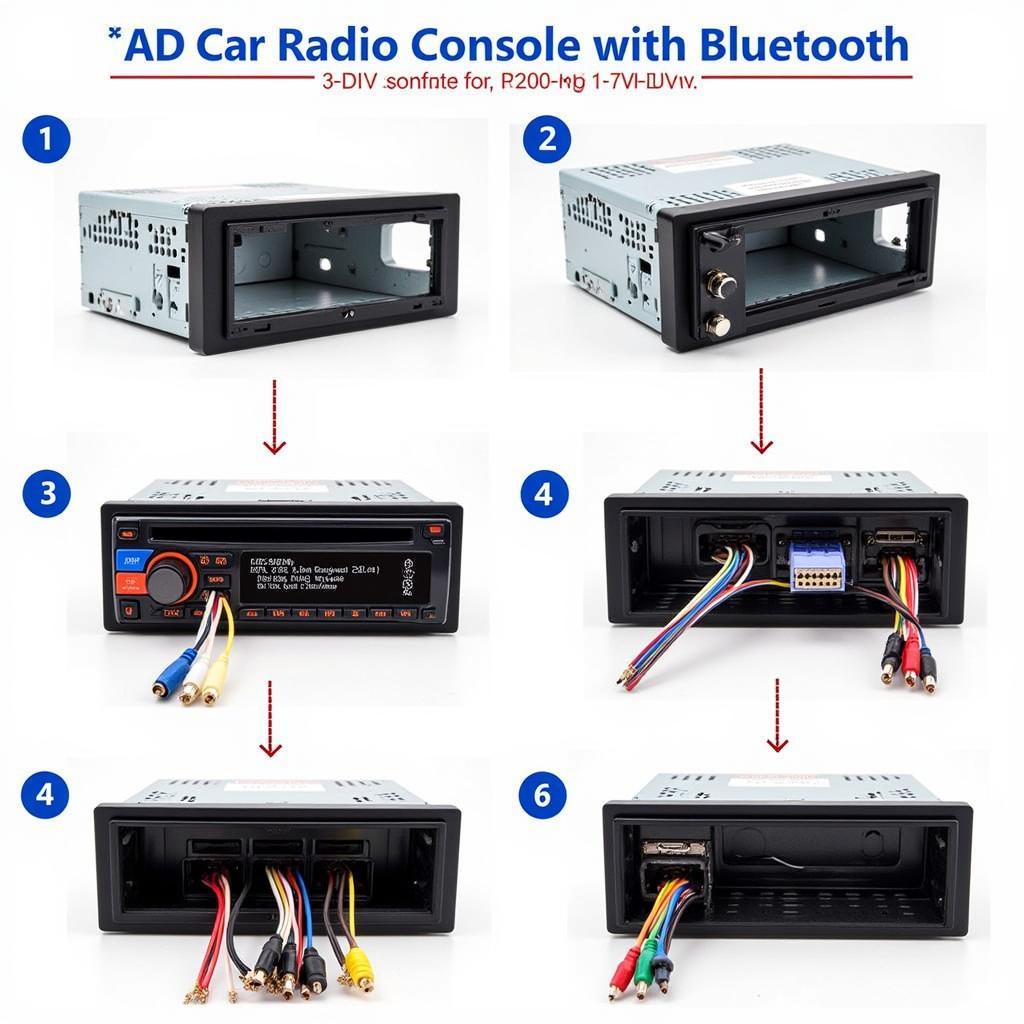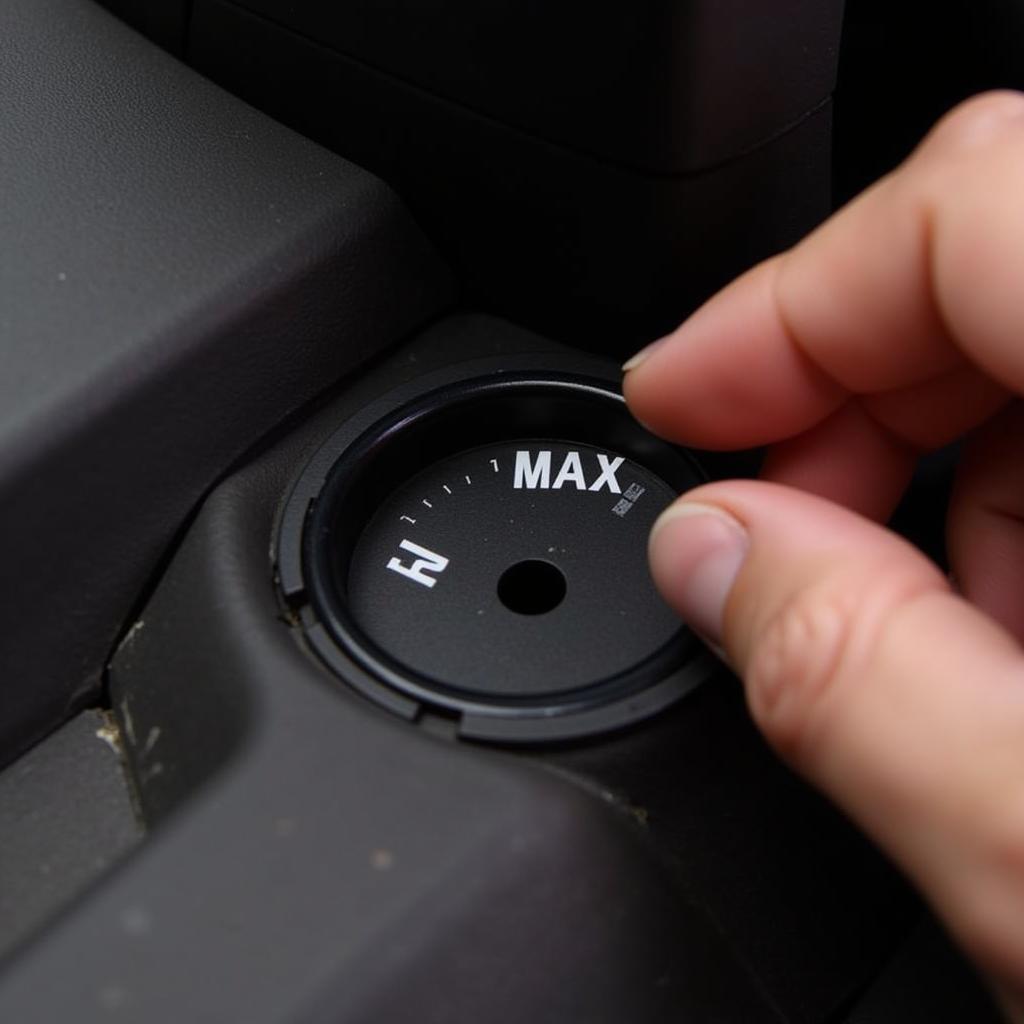If your Hyundai’s battery warning light and brake light illuminate simultaneously, it’s a clear signal that your vehicle requires immediate attention. This combination of warning lights can point to several potential issues, ranging from minor inconveniences to serious mechanical failures.
This article will guide you through the common causes of a Hyundai battery warning light and brake light appearing together, potential solutions, and essential steps to take to rectify the situation.
Understanding the Warning Lights
Before delving into the causes, it’s crucial to understand what each warning light signifies:
- Battery Warning Light: This light, often depicted as a car battery icon, indicates a problem with the charging system. This could mean the alternator is not charging the battery properly, the battery itself is failing, or there’s an issue with the wiring in between.
- Brake Warning Light: This light, usually a circled exclamation mark or the word “BRAKE,” typically illuminates for two primary reasons: either the parking brake is engaged, or there’s a problem with the braking system.
When these two lights appear together, it often suggests a connection between the electrical system and the braking system, which could point to a failing alternator.
Common Causes and Solutions
Here’s a breakdown of the common culprits behind a simultaneous Hyundai battery warning light and brake light:
1. Faulty Alternator:
The alternator is the powerhouse of your car’s electrical system, responsible for charging the battery and powering electrical components while the engine is running. A failing alternator can’t provide sufficient power, leading to a drained battery and triggering both warning lights.
Solution: A qualified mechanic should test the alternator. If it’s faulty, it needs replacement.
2. Worn-Out Battery:
While a failing alternator is a frequent cause, an old or damaged battery can also trigger the warning lights.
Solution: Have the battery tested. If it’s nearing the end of its life or damaged, a replacement is necessary.
3. Loose or Corroded Battery Cables:
The battery cables act as conduits for electrical current. Loose or corroded connections can disrupt the flow of electricity, impacting both the battery charging and braking systems.
Solution: Inspect the battery terminals and cable connections for looseness or corrosion. Clean any corrosion and tighten loose connections.
4. Faulty Brake Light Switch:
In some Hyundai models, a faulty brake light switch can cause both the battery and brake warning lights to illuminate. The brake light switch activates the brake lights when you press the pedal and can also impact the cruise control and other systems.
Solution: A mechanic can diagnose a faulty brake light switch and replace it if necessary.
5. Electrical System Issues:
Less commonly, issues within the broader electrical system, such as a short circuit or wiring harness problems, can lead to multiple warning lights illuminating, including the battery and brake lights.
Solution: Diagnosing broader electrical issues requires specialized equipment and expertise. It’s recommended to consult a qualified Hyundai mechanic or electrician.
What to Do When the Warning Lights Appear
- Stay Calm and Assess: When the warning lights illuminate, don’t panic. Safely pull over to the side of the road as soon as possible.
- Check the Parking Brake: Ensure the parking brake is fully disengaged.
- Turn Off Non-Essential Electrical Components: To conserve battery power, switch off the radio, air conditioning, and any other unnecessary electrical devices.
- Seek Professional Help: If the warning lights persist after checking the parking brake, it’s crucial to seek professional help. Continuing to drive with a potentially compromised charging or braking system can lead to further damage or unsafe driving conditions.
Preventative Measures
Regular vehicle maintenance can help prevent many of the issues that lead to a Hyundai battery warning light and brake light appearing together:
- Regular Battery Checks: Have your battery tested annually or more frequently if it’s nearing the end of its expected lifespan.
- Alternator Inspections: During routine maintenance, ask your mechanic to inspect the alternator for signs of wear or damage.
- Visual Inspections: Regularly inspect your battery terminals and cable connections for any signs of corrosion or looseness.
Conclusion
Ignoring a Hyundai battery warning light and brake light appearing together can lead to inconvenient breakdowns, costly repairs, and potentially dangerous driving situations. By understanding the common causes and taking prompt action, you can ensure your Hyundai remains safe and reliable. Remember, if you’re ever uncertain about the cause of warning lights or how to address them, seeking professional help from a qualified Hyundai mechanic is always the safest course of action.
FAQs
1. Can I jump-start my Hyundai if the battery warning light and brake light are on?
While jump-starting might temporarily get your Hyundai running, it doesn’t address the root cause of the problem. It’s crucial to identify and address the underlying issue to prevent further complications.
2. How long can I drive my Hyundai with the battery warning light and brake light on?
It’s strongly discouraged to drive with both lights illuminated. The severity of the issue can vary, but continuing to drive could result in a complete loss of power or braking ability.
3. Are Hyundai battery warning light and brake light issues common?
While any car can experience these issues, certain Hyundai models have reported a higher incidence of problems related to the alternator, battery, or brake light switch.
4. How much does it cost to fix a Hyundai battery warning light and brake light issue?
The repair cost depends on the underlying cause. A simple battery cable cleaning might cost a few dollars, while an alternator replacement can range from a few hundred to over a thousand dollars.
5. Can I fix these issues myself?
While some basic troubleshooting like checking battery connections can be done at home, it’s recommended to seek professional help for diagnosis and repair, especially for issues involving the alternator, electrical systems, or brakes.



